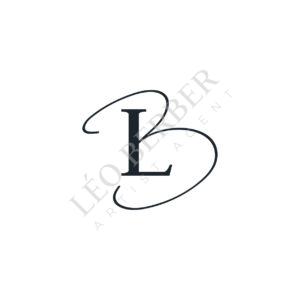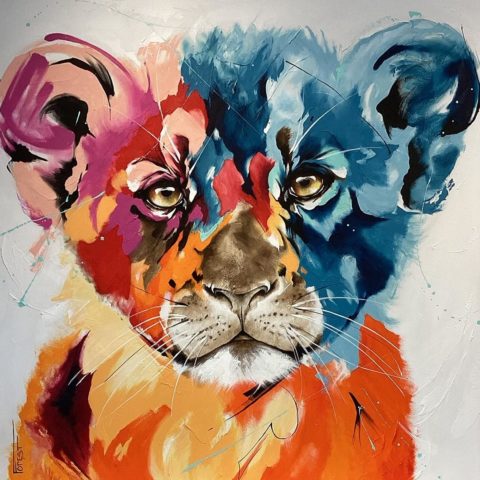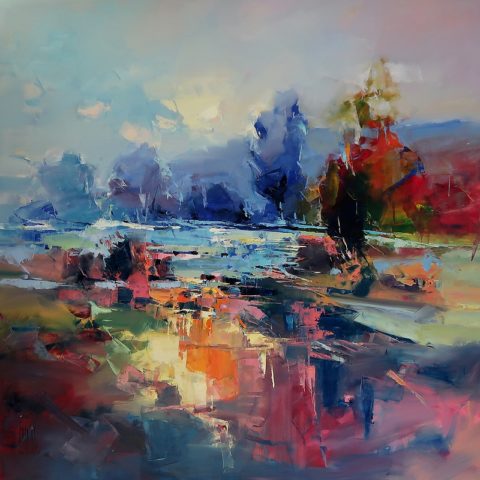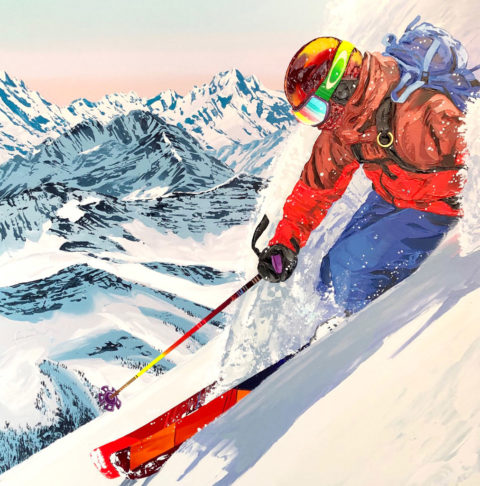Oil, Acrylic, Mixed Media, Giclee
Getting the facts straight

At Leo Berber, we stand for high quality artwork, coming from artists that each have their unique approach. Within our artist roster, we showcase diverse painting styles such as oil, acrylic, mixed media and giclee. With this article, we would like to clarify those different techniques as we discovered sometimes opinions are skewed.
Oil painting, an ancient artistic tradition, has been used in some of the world’s most renowned artworks. This method involves blending pigments with drying oils like linseed or walnut oil. Oils grant a glossy appearance by impeding light passage and offering easier blending due to a slow drying process. These properties often result in works with more texture and depth.
Acrylic painting, characterized by its water-based nature, dries quickly, and allows/asks for rapid application. While mastering blending in acrylics can be challenging due to this swift drying time, it enables artists to create sharp lines and vibrant colors. Unlike oil paintings, acrylics maintain their bright hues over time without the yellowing witnessed in old master oil paintings.
The selection between these painting styles isn’t merely an economic decision or a judgment of an artist’s skills. It stands as a personal preference, guiding the artist in emphasizing specific aspects within their work.
Mixed media art embraces the use of unconventional materials. Artists in this art field employ collage techniques -sometimes utilizing collected snippets- alongside paint sprays, resins, and alternative mediums (deviating from traditional canvas). These creations frequently fall within the segment of pop art.
Finally, a noteworthy mentioning of the giclée. The word Giclée (“gee-clay”), is coming from the French word gicler, which means to spray or squirt. This printing technique involves squirting microscopic pigment ink dots onto high-quality art canvas or specialized paper using inkjet printers. (Please, do not think of these printers as your dust collecting desktop printer; these are sophisticated high-end printers with exceptional accuracy and wide tonal range.) At the base is a high-resolution scan or photograph of an original painting. The ink used in this process has been laboratory tested and is known to withstand aging.
Our artists hand-finish each piece, creating small volume limited edition prints with a unique touch and original signature. The result is collectible art which is more accessible and offering an opportunity to acquire pieces from artists whose originals are nearly unattainable.
Giclée prints are widely accepted within art communities, embraced by art buyers, galleries, and museums.



